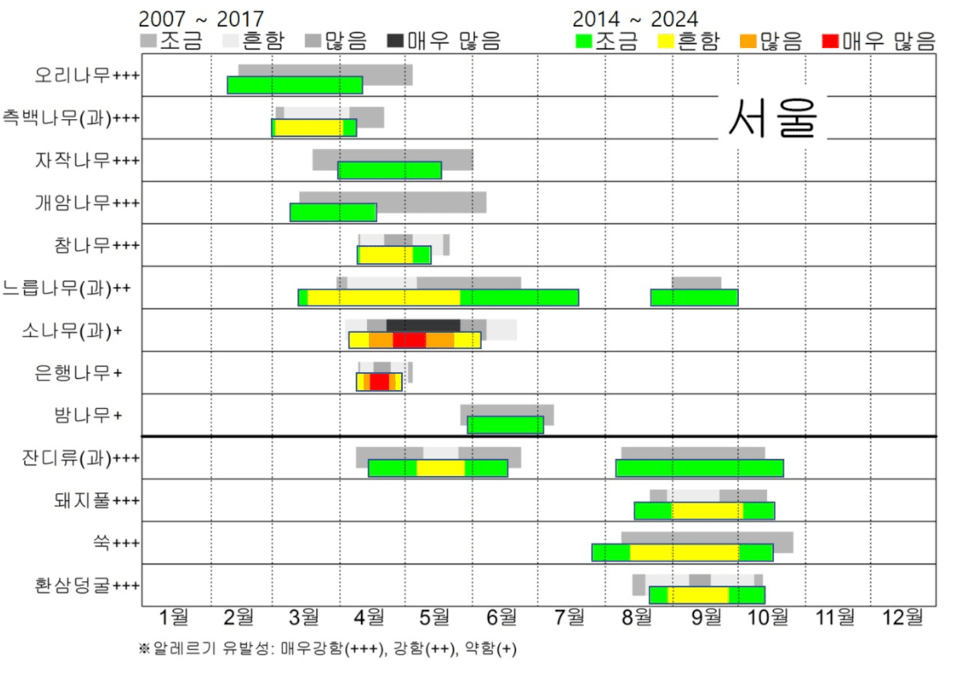The period for pollen dispersal is advancing, and the concentration is intensifying, requiring caution from allergy patients.
The Korea Meteorological Administration (KMA) released the latest version of the ‘2025 Allergy-Inducing Pollen Calendar’ on April 15. Developed based on observation data from the past 11 years (2014-2024), this calendar provides a four-level classification of pollen concentrations for 13 representative plant species across 8 cities.
Tree pollen has advanced by an average of three days nationwide, with regional variations: Jeju by 7 days, the central region by 5 days, and the southern region by 1 day. High allergenic species like alder, thuja, and oak are often observed in foothills, parks, and as landscaping trees in apartment complexes, necessitating precautions during outdoor activities.
While the overall pollen dispersal period has decreased by an average of 4 days nationwide, the concentration has intensified. In particular, ginkgo trees are seeing shorter dispersal periods, but the pollen concentration has increased, raising the risk of exposure in urban areas.
Grass pollen occurs twice in spring and autumn, reducing the dispersal period by 10 days in the central region and 3 days in the southern region, whereas it increased by 34 days in Jeju.
Weed pollen, predominantly in autumn, has increased by an average of 5 days. Ragweed and mugwort are blooming about a week earlier, while Humulus japonicus is showing a tendency to bloom later.

The pollen calendar can be checked on the Korea National Institute of Meteorological Sciences website, along with information on pollen collection and microscopy methods, as well as details on allergy-inducing plants.
Dong-eon Jang, the Administrator of the Korea Meteorological Administration, stated, “We hope the latest pollen calendar will aid allergy sufferers in planning outdoor activities,” and added, “We will continue to expand weather-related health information that is closely linked to the lives of the public.”